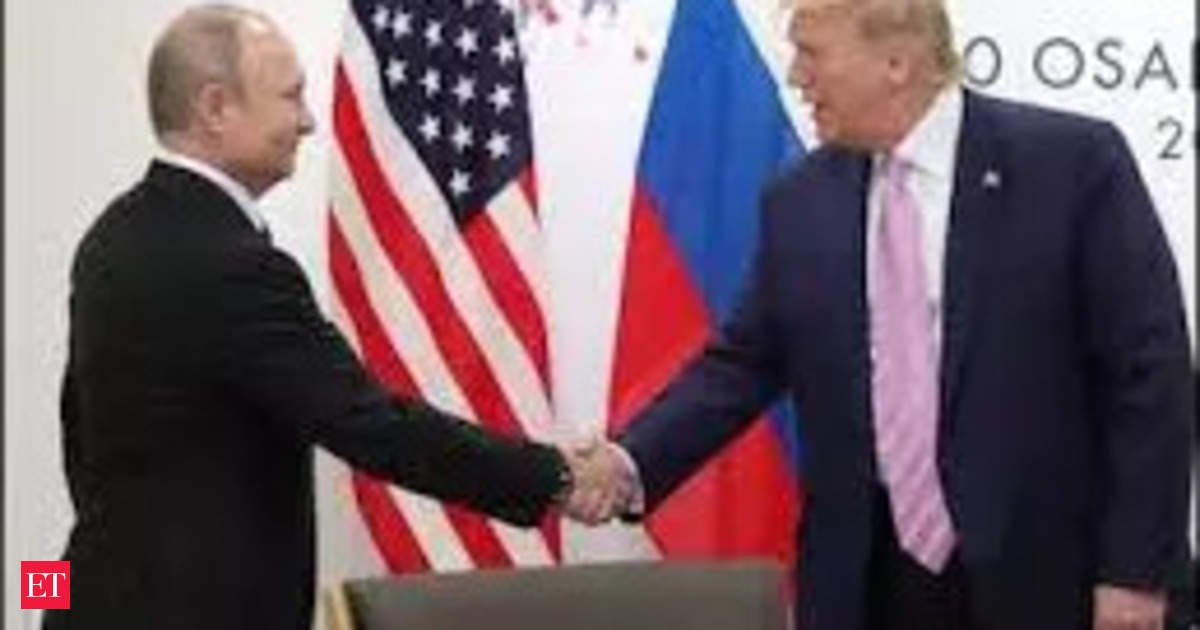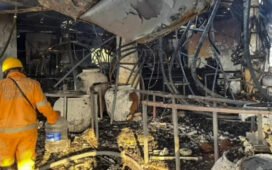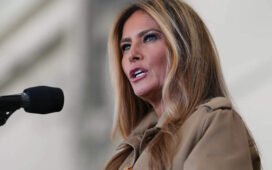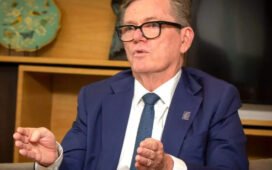However, Trump has emphasized that the United States will not deploy its troops or directly fund the buffer zone mission, as mentioned in a report by Telegraph.
Trump’s approach to peace has been met with mixed reactions. While Russian President Vladimir Putin welcomed the potential for renewed U.S.-Russia relations under Trump, Ukrainian President Volodymyr Zelensky has expressed concerns, warning that any peace efforts perceived as appeasing Russia could jeopardize Europe’s security.
Also Read : Oshi no Ko Chapter 166: See release date, time, spoilers and where to read
Buffer Zone and NATO Concessions
In the proposed plan, Ukraine would agree to forgo its NATO membership ambitions temporarily, with its security reinforced by European forces rather than American troops. Trump’s team has advocated for European nations like Germany, the UK, France, and Poland to shoulder the responsibility of maintaining the buffer zone, aiming to protect Ukraine without direct US intervention. A member of Trump’s team, quoted in The Wall Street Journal, stated, “We are not sending American men and women to uphold peace in Ukraine. And we are not paying for it.”
While Trump’s peace proposal intends to halt immediate violence, Zelensky has warned against a settlement that could undermine Ukraine’s sovereignty. Ukraine’s leader, addressing European Union officials in Budapest, insisted on a “just peace,” stating that any concessions perceived as weak would endanger Europe’s stability.
International Responses and Strategic Adjustments
Putin recently commented on Trump’s election win, expressing optimism for renewed dialogue and a resolution to the Ukrainian conflict. Addressing the Valdai Discussion Club in Sochi, he voiced support for Trump’s desire to repair relations with Russia, viewing it as a step toward easing the ongoing crisis.
Putin also highlighted the strategic need for diplomatic engagement with Washington, reflecting his interest in finding common ground with the Trump administration on resolving the conflict.
Also Read : Nobody Wants This Season 2: Potential release window, what to expect & more
However, some European leaders have expressed reservations, anticipating that Trump might scale back U.S. support for Ukraine. This uncertainty has led figures like French President Emmanuel Macron to call for an increase in European defense spending, emphasizing that Europe must take charge of its security. Macron’s call underscores concerns that Trump’s plan could alter NATO’s role in the region, compelling Europe to rethink its own security commitments.
Challenges in Implementation and Regional Implications
The feasibility of Trump’s plan largely depends on securing consensus among Western allies and satisfying Ukrainian demands for security. Trump allies have proposed various scenarios, including the freezing of current frontlines and establishing Ukraine as a neutral state.
While some advisors, like JD Vance, have argued that such a framework could be balanced, allowing Russia to retain parts of its current territory in exchange for Ukrainian sovereignty, others believe it could be challenging to negotiate without risking public opposition in Ukraine.
According to reports, some former Trump advisors have even suggested conditioning U.S. support on Ukraine’s willingness to enter peace negotiations. However, Zelensky remains firm in his stance, dismissing land concessions and viewing NATO membership as crucial to deterring future aggression from Russia.
Political analysts, such as Ukrainian expert Volodymyr Fesenko, argue that Ukraine could entertain certain compromises, provided they include solid security guarantees from the U.S. and Europe akin to those offered to allies like South Korea and Israel.
Outlook for Trump’s Peace Plan
As the geopolitical landscape remains tense, Trump’s potential cabinet appointments, such as Mike Pompeo for Secretary of Defense, could influence the details of the peace proposal. Pompeo, critical of the Biden administration’s aid to Ukraine, may advocate for a more assertive US stance.
Meanwhile, former diplomat Richard Grennell has suggested “autonomous zones” within Ukraine, an approach reminiscent of the Minsk agreements, which Ukraine has previously rejected.
FAQs
How many tanks does Russia have left?
The IISS Military Balance 2024 report indicates that Russia retains approximately 1,750 operational tanks of various models, including over 200 T-90 tanks, with an additional 4,000 tanks held in storage as of March 2024.
Why did the Ukraine war start?
The Russo-Ukrainian War began in February 2014 after Ukraine’s Revolution of Dignity. Russia occupied and annexed Crimea and backed pro-Russian separatists in the Donbas, where they engaged in conflict with Ukrainian forces. The initial eight years of this conflict also saw naval clashes and cyberattacks as part of the ongoing hostilities.
Disclaimer Statement: This content is authored by a 3rd party. The views expressed here are that of the respective authors/ entities and do not represent the views of Economic Times (ET). ET does not guarantee, vouch for or endorse any of its contents nor is responsible for them in any manner whatsoever. Please take all steps necessary to ascertain that any information and content provided is correct, updated, and verified. ET hereby disclaims any and all warranties, express or implied, relating to the report and any content therein.









